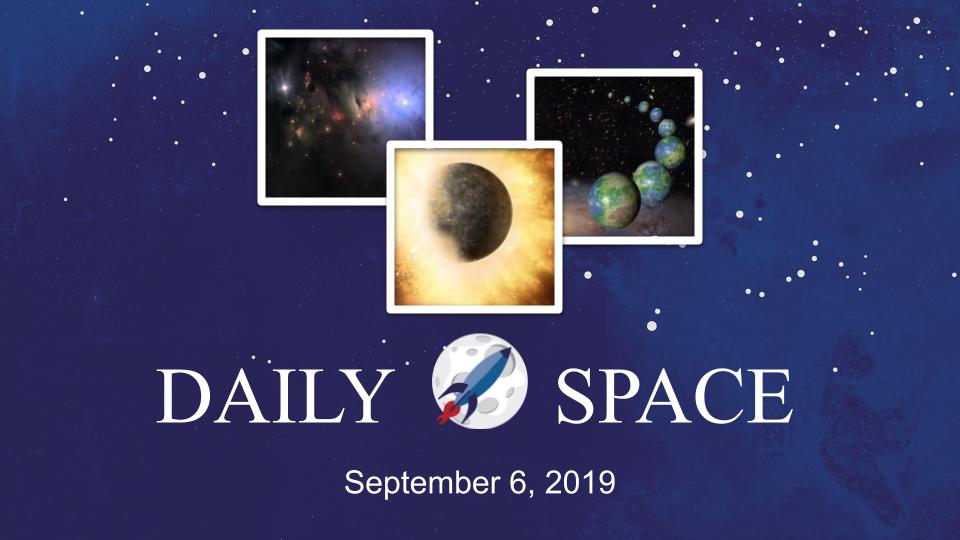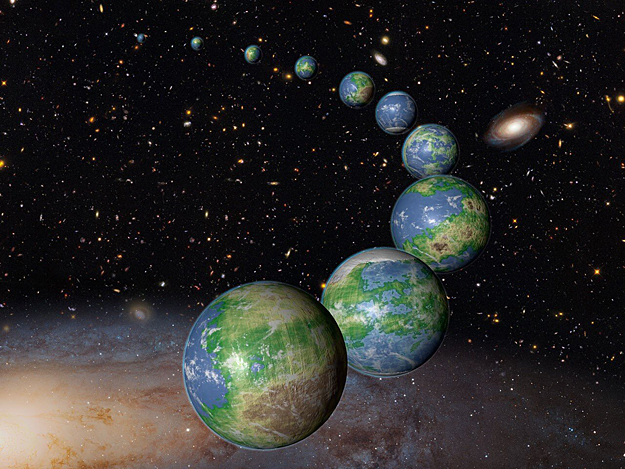
Since 1995, we have gone from not knowing of any alien planets to knowing of 1000s. With this fast flow of data came the ability to test our theories of solar system formation against observed reality. In three new studies, we look at the rotation of baby solar systems, how planet densities are explained by whipping up forming worlds, and how Earth would look to distant aliens.
Links
Rotating young solar systems
- How to spin a disk around young protostars (press release)
- The specific angular momentum radial profile in dense cores: improved initial conditions for disk formation (arXiv)
Making Fluffy Planets
- Planetary Collisions Can Drop the Internal Pressures in Planets (press release)
- Giant impacts stochastically change the internal pressures of terrestrial planets (posted paper)
Earth’s biosignature
- Canadian astronomers determine Earth’s fingerprint in hopes of finding habitable planets beyond the Solar System (press release)
- An empirical infrared transit spectrum of Earth: opacity windows and biosignatures (MNRAS)
Transcript

© Adam Block and Sid Leach Mount Lemmon Sky Center University of Arizona
Today’s astronomy news is filled with planet formation. In our first story, we peer deep into the Perseus molecular cloud and a new study from the Max Planck Institute for Extraterrestrial Physics that explains how forming solar systems spin. There are a lot of detail in planetary formation that we don’t understand, but we can piece together the big picture by looking at star forming systems. We clearly see stars forming in fragmenting clouds of gas and dust. As these clouds collapse, they begin to spin, and it is in the heart of this spinning, collapsing, cocoon of material that a protostar will turn on and planets will begin to form. Further details are really hard to figure out, and one of the more difficult to figure out than expected problems has been figuring out if the gas rotates like a solid object or like a collection of objects whose motions are determined by orbital dynamics.
This new study, led by Jaime Pineda, observed 3 very young systems that all have edge on disks that allow us to easily measure the rotational velocities of material at a variety of distances. Using the Very Large Array they clocked speeds in the systems’ cores that look like solid body rotation, while in the outer regions motions were driven by the turbulent inflow of material. They found a single computational model that matched these motions in all three systems, and that model requires a magnetic field that prevents the turbulent inflowing material from falling in too fast. This limit to the inflow and the new understanding of the disk motions indicates that massive disks can’t form fast. This work is still in its early days, but it is using observations to put solid limits on solar system formation models. Here is to hoping this team finds many more edge on systems and is granted the telescope time they need to observe them.

And now I’d like to push the clock forward in solar system formation and look at the period of planetary formation, collisions, and a story of one result building on another. Back on August 14 we brought you a story on how a collision between a young Jupiter and a 10 Earth mass proto-planet produced our modern Jupiter and it’s fluffier than expected core. Yes folks, I said fluffy – and so did the scientists doing the research. Well, the fluffy news continues with a new study coming out of Caltech that predicts that giant impacts can lower the internal pressure of planets, essentially turning them from dense spherical bricks into light and airy worlds. Just like whipping your cake batter or mixing your eggs can introduce air into your favourite foods, collisions can can vaporize material, mixing gas into your favourite worlds. They also found, rapid rotation, created by the collision, can also expand out the planet.
This research helps us understand our own planet, which experienced a massive, moon forming collision billions of years ago, and has continued to be bombarded by rocks large and small all the way up to today. Early on, when things were a bit less solid, each impact changed the chemistry of the Earth’s mantel ever so slightly as the metals from impactors interacted with the materials in the Earth. Our planet’s internal pressure should have effected those reactions in very specific ways that should be observable in the chemical composition we see today. The thing is, what we see indicate the planet’s internal pressures were much lower than gravity alone could explain. With these new models, we can now match theory to observation and say, if you want a light a fluffy planet, throw a lot of impactors at it while it’s still molten.

It was only in 1995 that we found the first regular planet orbiting an alien star, and in these past 24 years we have gone from a handful of worlds to thousands of known worlds. Many of us hope that some of these worlds support some kind of life, although I for one hope it will stay far, far way. If that life is there, the question becomes how do we detect it without being able to visit it. Our best hope may come from looking at distant atmospheres in search of the specific signature of life. From pollution from cars to oxygen from plants, life changes our world in potentially detectable ways. Now, for the first time, scientists have determined what the Earth would look like if we were observed. For more than a decade, Canada’s SCISAT has circled Earth looking at how sunlight passes through our atmosphere, getting scattered and absorbed by particles and gas. Designed to study our world’s Ozone layer, the data can be repurposed to determine life’s fingerprint in the atmosphere.
Just like human fingerprints on objects, life’s fingerprint on the atmosphere could be hard to see like print on wood, or easy to see like a fingerprint on clean glass. According to study researcher Nicloas Cowen, who worked with student Evelyn MacDonald, the JWST, if launched, may be able to detect the biosignature of methane and ozone if it peers and target planet long enough. This would be tricky work, requiring repeated observations of a transiting planet, perhaps across years as we wait for the world to orbit back in front of its star, but… if you are going to confirm life, a slow coming to terms with its definitive reality may be best for our Earth-bound society.


 We record most shows live, on Twitch. Follow us today to get alerts when we go live.
We record most shows live, on Twitch. Follow us today to get alerts when we go live.